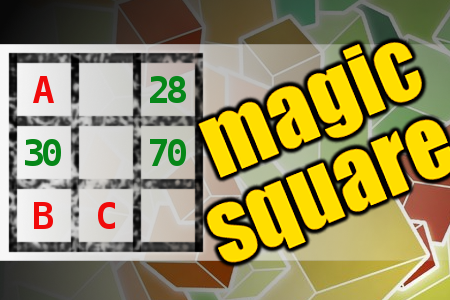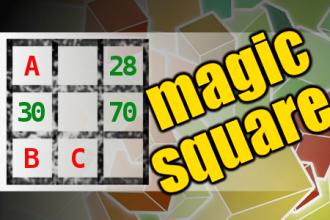MAGIC SQUARE: Calculate A*B+C
The aim is to place the some numbers from the list (9, 20, 22, 24, 26, 28, 30, 70, 74, 78) into the empty squares and squares marked with A, B an C. Sum of each row and column should be equal. All the numbers of the magic square must be different. Find values for A, B, and C. Solution is A*B+C.Correct answers: 43
The first user who solved this task is Eugenio G. F. de Kereki.
#brainteasers #math #magicsquare

A professor stood before his c...
A professor stood before his class of senior organic biology students, about to hand out the final exam.
"I want to say that it's been a pleasure teaching you this semester. I know you've all worked extremely hard and many of you are off to medical school after summer. So that no one gets their GPA messed up because they might have been celebrating a bit too much this week, anyone who would like to opt out of the final exam today will receive a 'B' for the course."
There was much rejoicing in the class as many students took the professor up on his offer. As the last taker left the room, the professor looked out over the handful of remaining students and asked. "Anyone else? This is your last chance."
One final student rose up and opted out of the final. The professor closed the door and took attendance of those still remaining.
"I'm glad to see you believe in yourselves," he said. "You all get "A's."
"I want to say that it's been a pleasure teaching you this semester. I know you've all worked extremely hard and many of you are off to medical school after summer. So that no one gets their GPA messed up because they might have been celebrating a bit too much this week, anyone who would like to opt out of the final exam today will receive a 'B' for the course."
There was much rejoicing in the class as many students took the professor up on his offer. As the last taker left the room, the professor looked out over the handful of remaining students and asked. "Anyone else? This is your last chance."
One final student rose up and opted out of the final. The professor closed the door and took attendance of those still remaining.
"I'm glad to see you believe in yourselves," he said. "You all get "A's."

